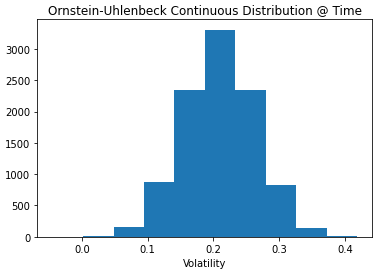Heston Model Calibration to option prices
The Heston model is a useful model for simulating stochastic volatility and its effect on the potential paths an asset can take over the life of an option. It’s popular because of:
– easy closed-form solution for European option pricing
– no risk of negative variances
– incorporation of leverage effect
This allows for more effective modeling than the Black-Scholes formula allows due to its restrictive assumption of constant volatility.



